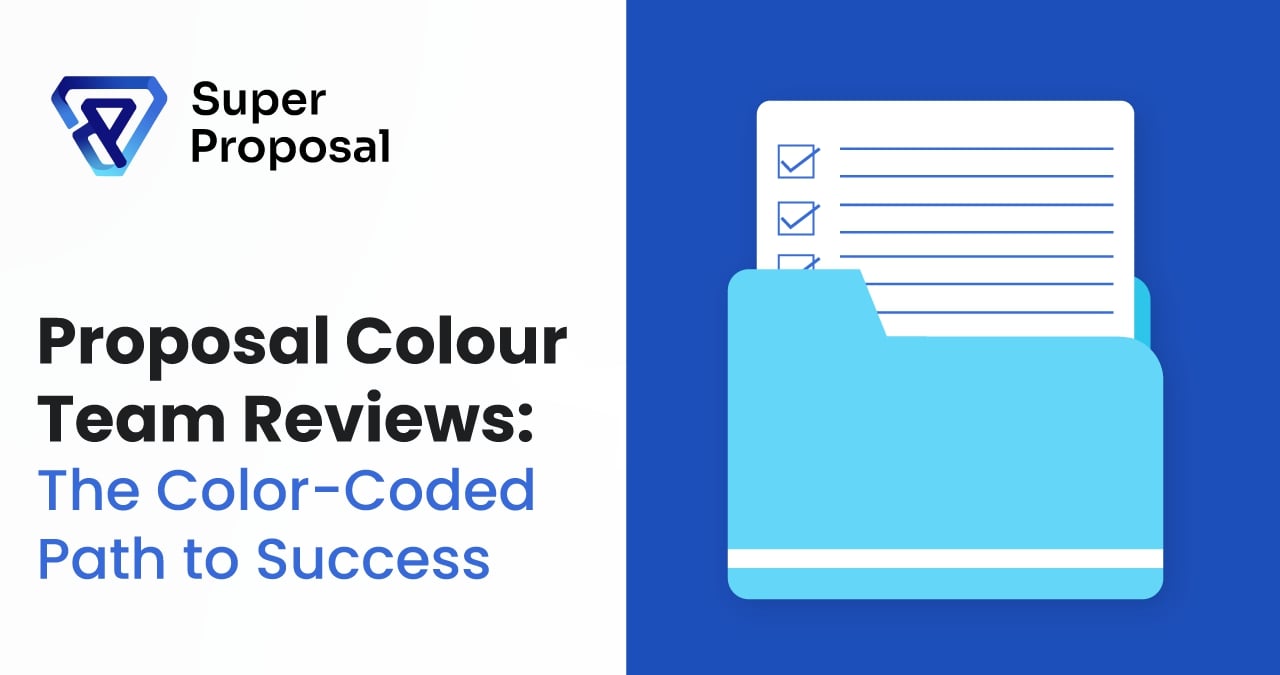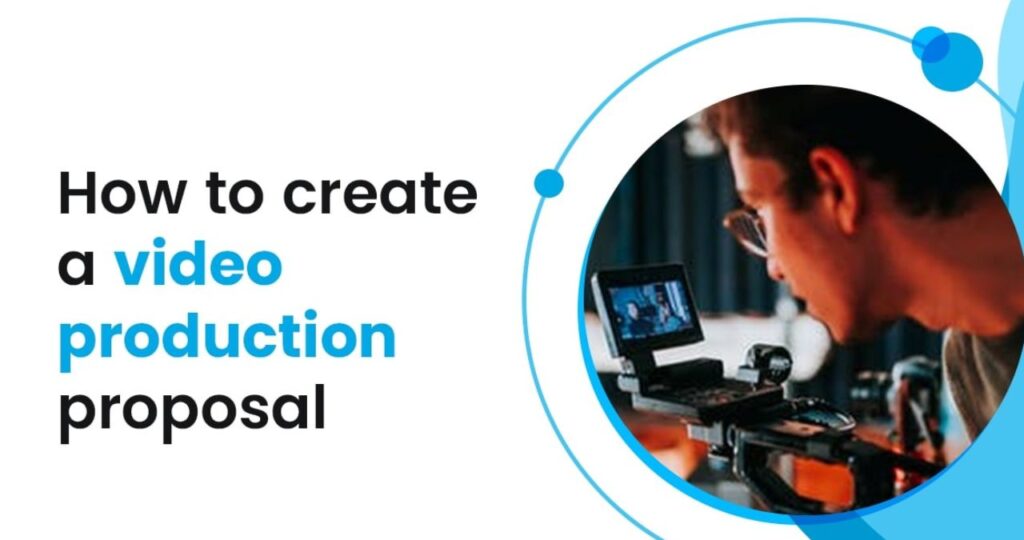Proposal Color Team Reviews And Ratings: Complete Guide
NOV 29, 2024 | LAST UPDATED ON NOV 29, 2024 BY ANGELICA NAIDU

Have you ever wondered how successful proposal teams manage to create standout RFP submissions? The answer lies in collaboration and structure.
In fact, the average proposal team consists of around 8 experts. The big group brings their winning ideas together by using a colour-coded system for reviews.
The colour-coded system for reviews is mostly used in the public sector. It helps to make the proposal-making process much more structured and easier to manage.
In it, each colour represents a different stage and team, helping everyone to know exactly what to focus on at each step.
A colour-coded system makes it easier to catch important details, refine strategies, and ensure the proposal is ready to stand out in a competitive bidding process.
Table of Contents
ToggleWhat are proposal colour team reviews?
Colour team reviews are a structured and systematic process used in proposal development. It ensures that a proposal is of the highest quality, meets all requirements and stands out. This takes place at different stages, with each colour team focussing on a specific aspect of the proposal.
The primary colors used are: blue, pink, red, green, gold, and white. These colours represent different phases of the proposal lifecycle, from strategy development to final polishing. Each colour team brings a unique perspective, contributing to the overall strength and effectiveness of the proposal. The main goal here is to ensure the proposal is compelling, complete, and fully aligned with the client’s needs.
Consider colour team reviews as checkpoints that outline the strategy and polish it. These review stages make sure that no important details are left out and any issues are found and resolved timely. This way, when the proposal reaches the final stage, it is well-polished, aligned with the client’s expectations, and ready for submission.
How Color Team Review Shapes Proposal’s Success
Each colour review has its own purpose, focusing on specific aspects of the proposal to maximise its potential.
Blue Team
Objective: Outline the proposal strategy and framework.
The Blue team checks your knowledge of the customers, opportunities, and competitors. Then they brainstorm potential solutions, create a winning proposal, guide writers to come up with the initial framework and find any gaps in information, data, and winning themes. They set the foundation to position your organisation as the customers’ preferred choice.
The success of the blue team depends on having a clear and complete proposal outline, assigning the right people for each task, and spotting any information gaps early on. Clear communication and careful planning make all the difference.
Key Activities:
- Review the proposal blueprint to ensure it aligns with the customer’s needs and preferences.
- Give feedback on potential solutions.
- Identify any gaps in the strategy.
- Recommend actionable steps to strengthen the proposal approach.
People Involved:
- Independent Blue Team leader
- Business Development Management
- Operational Management
- Experts on customer
- Product/Service Experts
Why is it important?
The team’s unbiased feedback can help find overlooked insights about the customer and refine the strategy early on.
Pink Team
Objective: Create compelling narratives and review content before it is fully developed.
The pink team plays an important role in transitioning the proposal from initial frameworks to a structured narrative. While the blue team focuses on setting the strategy, identifying gaps and outlining the framework, the pink team ensures those gaps are filled and everything is written down. They review mockups, storyboards, and writing plans to see if they align with the approved strategy. Catching and correcting any issues early on saves time and resources.
Spelling and grammatical errors are not much of a concern for the pink team. Their focus is only on content and structure. The proposal is around 65-70% complete at this stage, with important details in place.
Key Activities:
- Ensure the alignment of mockups, reviews, and writing plans with the approved strategy.
- Create compelling narratives.
- Identify any gaps or inconsistencies in the content and structure.
People Involved:
- Independent Pink Team leader
- Senior Leadership
- Capture Manager and Opportunity Lead
- Subject Matter Experts (SMEs)
- Solution Architect
- Section/Volume Leaders
- Proposal Writers
- Graphic Designers
- Editors and Reviewers
Why is it important?
A well-written narrative lays the groundwork for a compelling and strong final submission, helping to avoid costly rewrites later on.
Red Team
Objective: Review the proposal for clarity and viability.
The red team keeps the customer’s expectations in mind and reviews the proposal’s messaging, completeness, compliance, responsiveness, and overall effectiveness. They also check that the proposal is persuasive and conforms to the specific requirements of the RFP.
Their customer-focused perspective helps to improve the document before submission. At this stage, the proposal is 80-85% complete.
Key Activities:
- Assess the proposal for clarity, compliance, and persuasiveness.
- Give actionable feedback for improvement.
People Involved:
- Independent Red Team leader
- Senior leadership
- Industry SMEs
- Representatives from prior reviews
Why is it important?
The red team ensures that the proposal’s messaging and strategy resonate with the customers while minimising bias from the ones involved in its creation.
Green Team
Objective: Review cost and financial feasibility
The green team breaks down and reviews the cost of the proposed solution while adhering to the pricing format given by the RFP. It makes certain that the cost is accurate, competitive, and aligned with the technical and management solutions.
Key Activities:
- Cross-checking pricing against proposal components.
- Identifying any potential risks or gaps in cost estimates.
- Ensure alignment with customer expectations.
People Involved:
- Pricing Manager
- Business and Finance Managers
- Program Manager
- Estimators
Why is it important?
Accurate and transparent pricing helps to build trust with the customers. By doing this, one can avoid issues like overpricing or omitted costs.
Gold Team
Objective: Assess and give the final stamp of approval.
The gold team reviews the proposal thoroughly to ensure it is polished, complete, and ready for delivery. This stage involves going through the proposal line-by-line and finding out any remaining issues.
Key Activities:
- Conduct a line-by-line review for formatting, consistency, quality, and alignment with strategy.
- Get the final approval from leaders.
- Prepare the proposal for submission.
People Involved:
- Executive Leader
- Proposal Manager
- Senior Stakeholders
Why is it important?
The gold team will ensure that the proposal is error-free, professional, aligns with the approved strategy, and reflects the organisation’s best interest and effort.
White Team
Objective: To perform the final quality check.
The white team examines the final draft for errors or inconsistencies. Their focus is on identifying any spelling mistakes, grammatical errors or formatting issues.
Key Activities:
- Conduct a detailed review to find and correct any errors.
- Ensure consistent formatting, tone, and style.
- Confirm all required elements are included and properly aligned.
People Involved:
- Proposal Editors
- Proofreaders
- Senior Reviewers
Why is it important?
The white team’s final quality check ensures that the proposal meets the highest standards. It will improve credibility and leave a positive impression on customers.
Pros and Cons of Color Team Reviews
Pros
- Improved quality: With different stages in place, there will be little to no room for error or missed details.
- Strategic focus: Each stage has different objectives and activities, making sure the proposal aligns with the strategy and the client’s needs and goals.
- Higher win rates: A detailed and well-executed review process leads to a strong and compelling proposal, increasing win rates.
- Less last-minute stress: Reviewing at every stage reduces the chance of big and time-consuming last-minute changes.
Cons:
Time-consuming: This 6-stage review process is rather long as each team requires time to prepare, process and provide feedback.
Resource intensive: It calls for dedicated experts at every stage. It is not suitable for small organisations.
Risk of over anlaysis and review overlap: Multiple review stages can lead to redundant feedback and excessive revisions. It may cause delays and confusion.
Potential for conflict: If the reviewers have different viewpoints, it might create friction and slow down the process.
How to implement an effective color review process
For an effective colour review process, follow these steps:
1. Define the review phases
Start with setting up the different colour teams and defining their roles and tasks.
2. Select reviewers
Choose reviewers based on their expertise, experience, and understanding and requirements of the client’s needs. This way the feedback will be useful and targeted.
3. Schedule review meetings
Try to schedule meetings in advance. Confirm the availability of the team members for the decided review dates to avoid delays, and adjust, if necessary.
4. Prepare review documents
Make it a point to distribute the necessary documents at least 24 hours before meetings. The documents include RFP, solicitation documents, and any amendments or Q&As.
5. Conduct review meetings
During the meetings, tackle the high-priority feedback first and then low-priority feedback to address key issues thoroughly. Ensure each team member gets a chance to share their insights.
6. Integrate feedback
After the meeting, update the proposal document to address feedback provided to improve the proposal.
7. Final review
Once all feedback is integrated, conduct a final review to ensure the proposal is ready for submission.
Conclusion
Colour team reviews is the key to creating strong proposals that meet clients’ needs and avoid costly mistakes. They help improve quality, increase win rates, and take the pressure off at the final stage. They transform your proposal process, one colour at a time.
Additional Reads:
1. How to write RFP cover letter?
2. Winning Project Proposal Examples
Increase your close rates today!
Secure every pitch that you make with Super Proposal. Craft winning proposals, share and track them on a single, comprehensive platform.
✓ 15-Day Trial. No Credit Card Required.

Recent Post



